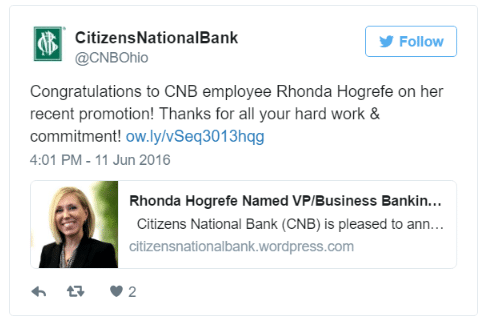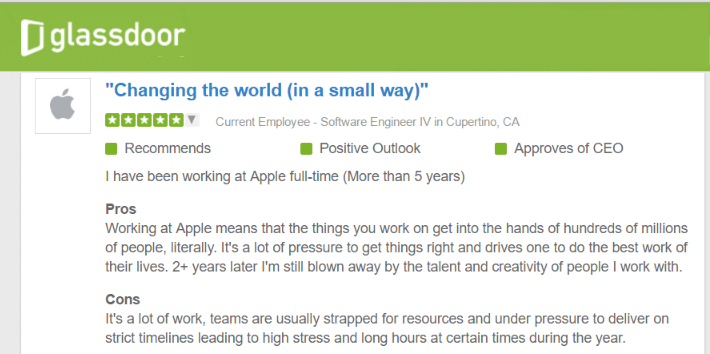In a world where 1 in 5 page views occur on Facebook, and Twitter users generate 6,000 tweets per second, social media is no longer a small element of the modern community life, it’s the beating heart of how we interact. It might be tempting to just leave social media totally in the hands of your marketing team, but the reality is that the whole company—including HR—needs to be on board.
While the social media landscape is still in a state of flux, success in this area isn’t random. Social media best practices go beyond marketing and PR: they’re about how people interact. Since HR is the industry of people, human resources professionals need to have a social media strategy. What can an HR professional do to harness social media for a positive employee culture?
1. Know the channels your employees use. Listen to what they say.
Together, customers and employees are the two groups that shape the reputation and image of your company. Their voice is much more powerful than any marketing or PR effort. Find out what platforms your employees use, and what they’re saying about you. It takes very little time to get an impression of what the public thinks about you as a company and an employer.
The easiest social media platforms for managing your reputation are LinkedIn, GlassDoor, and the first few pages of Google searches. These are the first places your job candidates will be checking before they decide to work for you. Facebook and Twitter are less straightforward, but you can track buzz and interactions around your company to get an understanding of where you stand.
Social media should already be part of your hiring process. Not only should you source candidates through LinkedIn (or work with recruiters who do), you should vet potential employees’ social media profiles during the hiring process. It will give you an insight into their personality that may not come out in a formal interview.
2. Celebrate on social media.
Embrace opportunities to celebrate your company on social media. Use your LinkedIn page, Twitter account, and Facebook company page to share promotions, new hires, company outings, fun traditions, perks, and milestones. Post often and at many levels — new and senior employees alike deserve recognition for hard work.

Include photos or videos to boost your views and humanize your company. Since your employees already use social media every day, show your appreciation for them where they (and the competition) can see. Make your competition envious of your workplace culture.
The key to this approach is consistency. Decide on a social media calendar, then design a process for selecting an employee to celebrate. Keep the process fair so that other employees don’t feel left out.
This personalized, grass-roots approach costs little time and money and dramatically boosts retention and your online reputation. When you paint a clear picture of your company’s selling points, you will attract and keep top talent.
3. Form strong bonds with your PR and marketing teams.
They’re the ones who manage your company’s branding and voice on the front lines. If you don’t communicate, you’ll miss out on insights into your people and potential candidates. Share your visions with each other. Talk about ways you can help each other reach those goals.
Your goal is a strong correlation between your brand and your employee culture. There is no substitute for keeping your finger on your company’s pulse. When individuals and departments are dissatisfied, they talk, and they may not talk to you first. A culture disconnect comes off as disingenuous to your customers and makes it hard for you to attract and keep your top employees.
4. Don’t try to gag people.
 You can’t monitor everything (nor should you want to), but you can get an idea of your employees’ social media habits before and after you hire them. Trying to shut people down will only fan the flames.
You can’t monitor everything (nor should you want to), but you can get an idea of your employees’ social media habits before and after you hire them. Trying to shut people down will only fan the flames.
A hyper-strict social media policy never goes over well (and may actually be illegal): “The National Labor Relations Board has concerns about companies that run with these very broad gag policies that relate to things going on in the workplace,” says Jon Hyman of the legal advisory firm Kohrman Jackson & Krantz.
Instead, integrate social media into your employee communications. Make a space for employees to talk internally and confidentially. Don’t rely on traditional methods (the anonymous comment box in the break room is outdated). Today’s employees are vocal and have many tools at their disposal to be heard. Let them know that you hear them so that you can solve problems together before they feel compelled to take their frustrations to public arenas.
If you notice a negative trend in what employees are saying, you have an opportunity to fix the problem and build on your strengths. Turning around an unhappy employee is a win for everyone, including you: workplace morale improves, productivity goes up, and you don’t lose an employee.
5. Ask for good feedback.
In addition to sharing successes from your own perspective, encourage employees to leave employer reviews on GlassDoor, Facebook, and other social media channels. Job seekers are more likely than ever to research company culture during the interview process, and positive employee reviews are a powerful tool to give you legitimacy. Dissatisfied employees speak up more often than happy employees. Avoid asking when your employees are likely to be stressed or nervous–such as close proximity to annual performance reviews, audits, or looming project deadlines.
Another great tactic is to create avenues for employees to share their own good news, such as a perk-related Twitter hashtag, or encouraging employees to tag themselves and share company event photos on Facebook. Your marketing and PR teams may have additional ideas and resources. One note: offering incentives in exchange for good reviews is not allowed.

GlassDoor is the top platform for workplace culture reviews. Many job candidates read through these reviews during their company research.
6. Know when to tune out.
Some people are determined to say negative things. Inevitably, some will stick. The best policy is to treat your people well.
Good news is the best antidote for bad press. Take advantage of opportunities to spread good news and fix problems promptly. Truly listen to your employees to clear up issues before they become exacerbated. Manage expectations and company policies right from the start to keep your employees happy. Most importantly, show your company in the best light by celebrating success.
